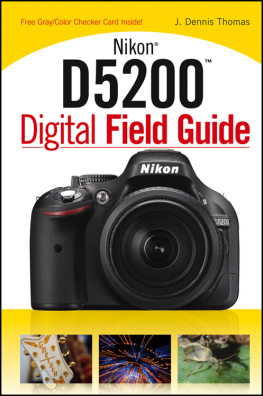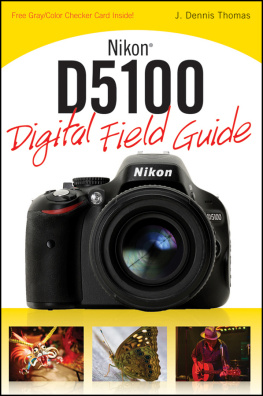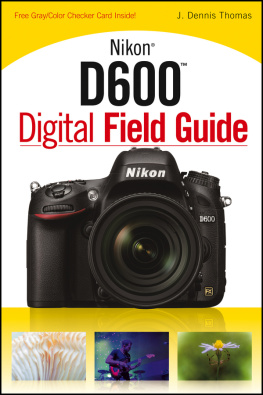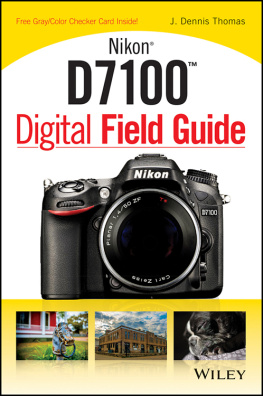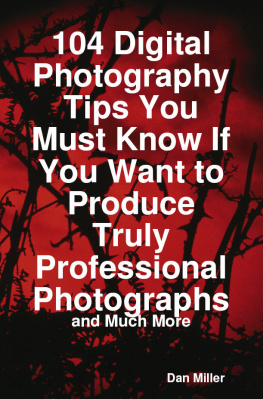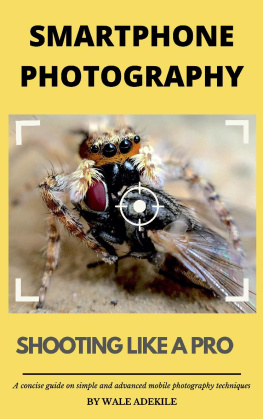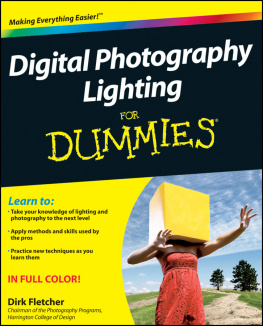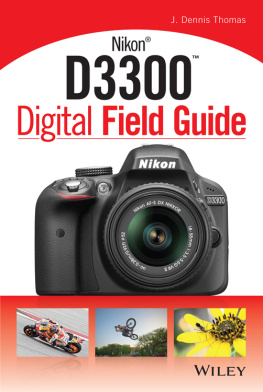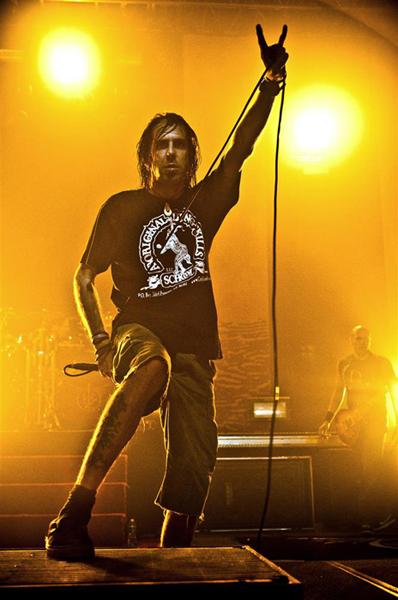
GEAR
Before you can start taking concert photos you need the gear. As with any type of job, from auto mechanics to information technology, having the right tools makes it infinitely easier to get the desired results. The right gear doesnt necessarily have to be the newest or the most expensive, but it should have the attributes you need to get the job done.
Theres a tendency among some photographers to get into debates over which camera systems are better, Nikon vs. Canon vs. Sony, etc. I wont be covering that topic here. For all practical purposes, a camera system has one purpose, which is to collect light and to record an image.
A common question that I get is, What gear do I need to get started? The short answer is that you can do concert photography with even the most basic gear, but as with any type of photography there is specific gear that will make the job easier, and theres an almost infinite amount of gear and gadgets that can be acquired.
In this chapter Im going to cover the basic necessities of a camera system: the camera body and the lenses, and the pros and cons of the different types of each.
CAMERA BODIES
Every camera manufacturer has numerous types of cameras, from the basic entry-level camera to the high-end professional model. Each level of camera has strengths and weaknesses, and even the top-of-the-line professional camera may have some attributes that you may not want or need.
If youre in the market for a new camera you should sit down and assess your wants, and more importantly, your needs, before you rush out and buy the newest, most expensive camera on the market. A lot of times you dont need all those bells and whistles, and they can be a hindrance when it comes down to the real work of actually shooting.
Resolution
Probably the first thing people look at when buying a camera is the resolution. The number of pixels on the cameras image sensor determines the resolution of the camera. Resolution is expressed in megapixels, the number of which is ascertained by counting the number of pixels in the height and width of the sensor and multiplying them. For example, 4608 3072 = 14155776 pixels, or about 14.2 megapixels.
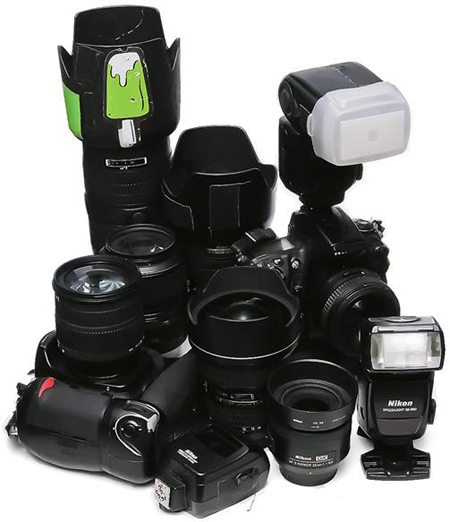
1.1 My camera bag has an extraordinary amount of gear, but I rarely take all of it with me. I generally mix and match depending on the venue and the scope of the assignment.
At first glance you might think that the higher the number of megapixels the better the camera, but this is not always the case. Although higher numbers provide you with more resolution, which translates into bigger images and a little more detail, theres the tradeoff of a smaller pixel pitch, or in laymens terms, the size of the pixel. This in turn reduces the cameras ability to have higher usable ISO settings due to the smaller pixels reduced ability to collect light.
When youre looking at purchasing a camera using megapixels as a measuring stick, one great thing to keep in mind is what the output of your images will be. If you are planning to print your images at a large size, more resolution is better, but if youre only planning on posting your images to the Web, a camera with less resolution will suffice. For all practical purposes a camera with 12 megapixels is usually more than enough resolution for almost any application.
Keep in mind that with a higher resolution your image files are also larger, resulting in longer transfer times that can fill up the camera buffer faster, which may cause the camera to bog down when shooting in bursts.
Bottom line is that these days most camera manufacturers use resolution as a marketing tool. A camera with 24 megapixels isnt necessarily twice as good as a camera with 12 megapixels. In truth, especially when dealing with the kind of low-light photography that concert photography often is, the 12 megapixel camera will outshine the model with the higher megapixel count.
Build and Durability
Two of the most important things to consider when looking at a camera for concert photography are build and durability. If youre considering making this a career, youre going to want a camera that is built to take the rigors of heavy use. Concerts held in outdoor venues can be dusty, or it may be raining or muddy. In this case youll want to look for a camera with weather sealing, which can also be a plus indoors shooting a small club show where there could be beer or drinks being splashed around. Trust me, Ive had beer spilled on my camera on more than a dozen occasions, especially when I was starting out.
Most of the mid to higher level cameras have a magnesium frame, as opposed to the polycarbonate or plastic body of the more entry-level models. A magnesium frame adds a much higher margin of durability to your camera. Camera bodies can be knocked around and sometimes even dropped when photographing in a crowd at a club or even in the photo pit of a major event. I highly recommend looking at magnesium-framed camera bodies for this type of work. These types of bodies are more robust and take a bit of a beating without suffering major damage. They are substantially heavier though.

1.2 While photographing the popular Austin punk band the Lower Class Brats at a tiny venue in Austin, the air was damp with sweat, condensation, and especially beer. Taken with a Nikon D700 with a Zenitar 16mm f/2.8 fisheye lens; ISO 200 for 1/4 sec. at f/5.6, TTL flash on, spot metering.
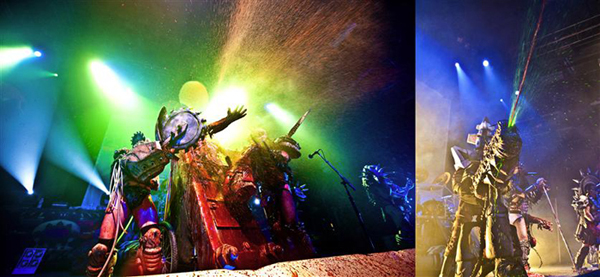
1.3 As you can see here, while photographing the performance metal band GWAR at the Austin Music Hall, I was repeatedly doused with alien blood and slime. The weather sealing saved my camera. Taken with a Nikon D700 with a Nikon 14-24mm f/2.8G at 14mm; ISO 2000 for 1/200 sec. at f/2.8, spot metering.
Another good point of a magnesium-framed camera is that when using heavier lenses such as a 70-200mm f/2.8, you have less of a chance of warping the lens flange if you have the camera and lens hanging from a strap. Although quite rare, plastic-bodied cameras have been known to warp slightly from the weight of the lens and in a few ultra-rare cases the lens flange has ripped completely from the body.
Smaller entry-level cameras are usually manufactured from a durable polycarbonate plastic. These cameras have the advantage of being much lighter, which can be a real asset when shooting an all-day-long festival. If youre not planning on doing a lot of heavy shooting, this may be a great lightweight option for you.
ISO Capabilities
The ISO capabilities of a camera are one of the more important features of a concert photographers camera. The better the ISO capability of your camera, the less noise you will see in your images, which results in images that are cleaner and much sharper.
Another facet to a cameras ISO capabilities is how the sensitivity can be set. Most newer cameras have the ability to set the ISO sensitivity to at least 3200 to 6400. Keep in mind that not all cameras are created equal: different manufacturers use different image processors and sensors, which can affect how much noise appears in your images at a given ISO setting.


